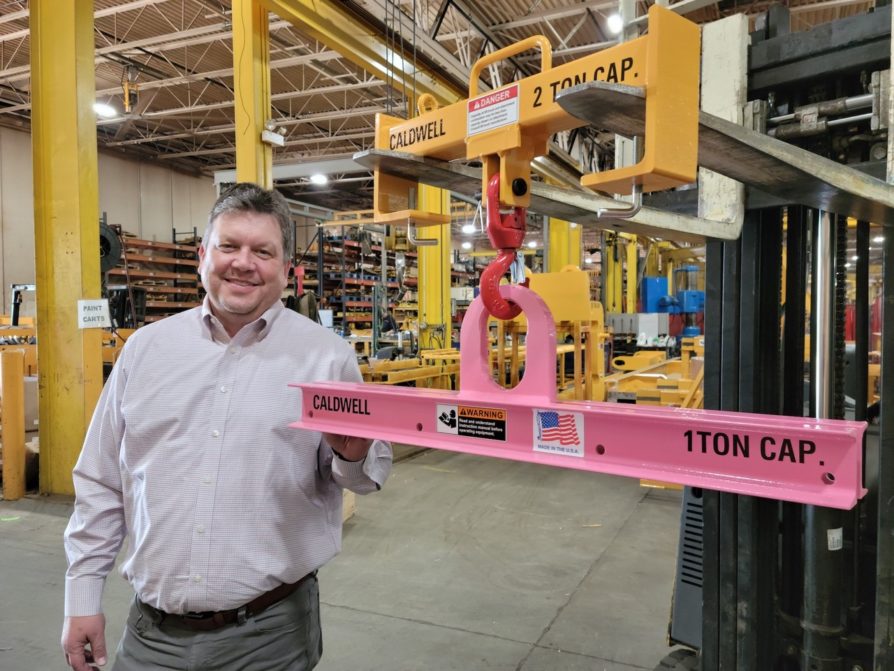)
Rowing the Boat
The best leaders can keep people heading in the same direction, even when the tide turns, but finding them isn’t easy, says Doug Stitt, president and CEO at The Caldwell Group Inc.
‘Row, row, row your boat
Gently down the stream…’
The trouble is, happily rowing down gentle streams ain’t business. It is sometimes, for an hour or two, but more commonly it’s white-water rafting, oftentimes without a paddle.
‘…Merrily, merrily, merrily, merrily…?’ Not in that order, anyway.
So, key to success is leadership. When I think of leadership, I think of the field general who is on the ground fighting with the troops and looking at the changing tide of the action. That’s where leadership is most important: keeping everyone working together and headed in the desired direction.
But it’s a minefield. Too often, leadership roles are given as a reward for performance or to people that have had the longest tenure. In many cases, those people had noticeable deficiencies before the appointment, yet folks are still surprised when they struggle.
And one of the worst things to endure is when someone is a poor performer, yet they get promoted. It’s such a negative for the rest of the organisation to see this happen because most know they weren’t a star player, but for some reason they were moved into a position of leadership.
As we’ll explore, therefore, central to leadership planning is managing and aiding transition to create the next generation of decision-makers.
But what does good business leadership look like? And where do you find it?
Identifying leaders
Step one here is: open your eyes.
Identifying leaders has to be a conscious activity because you can miss them. I’ve certainly done so before and luckily there were others in the organisation that spotted a person’s or persons’ potential.
Leaders have attributes that make them leaders, such as hard work, curiosity, and the ability to communicate.
Identification of that potential is the first step, but you have to understand there is investment required. It doesn’t just happen. And that’s an important second step that is too often not taken. Many are born with certain skill or traits. None of us though are perfect so we all require some level of development. For some that means exposure to mentorship, classes, and formal training.
We have an individual that came to Caldwell as a material handler—one of our entry positions. Today, they are the supervisor of our manufacturing engineering group and finishing a degree in engineering. They’ve earned that opportunity. They continued to do the hard work, but they needed support to realise their full potential. It’s a great process to see and be a part of.
On the flip side, we had one person who was with the company for over 30 years and was very good at his job. Due to his years of service and performance, he was moved into a lead position. Unfortunately, he struggled to manage others. I can recall specifically when I tried to talk through his performance, his repeated answer was, “But I’ve been here for 30 years”.
You can’t just push people into new and expanded roles and expect prior deficiencies to resolve themselves. I had worked with another great guy years back, but he struggled with managing. People constantly claimed he was a poor manager but did nothing about it (in terms of development, reassignment, etc.). I often responded to these complaints – I was in a different area of the company – suggesting that everyone knows the limitations in place. Either you accept them and work with them or do something different.
What did Albert Einstein once say? “The definition of insanity is doing the same thing over and over and expecting different results”. It can be applied here too.
I wish there was a specific formula because then we could all apply it. Certainly, proven leaders can be created, and we have other examples at my company where leaders have been moulded.
In a perfect world, everyone is promoted from within, but that’s an idealistic standpoint. The reality is that companies need different experiences and various perspectives, so you have to have a level of injection of new blood in order to keep the organisation growing and evolving. This is true both for the company as well as its people. Being exposed to new and different are ways to get everyone to keep asking: is there a better way?
Here in the US, a popular retail slogan is, ‘Every team member is empowered to please the customer’. Easier said than done, eh? Not everyone ultimately wants to make decisions or is prepared to. Therefore, the organisation must help to develop those skills in leaders and future leaders.
We had a case recently where we were struggling with something. To fix it would take reworking the project over a number of months, or we could find somebody that could do it quickly on an outsourced basis for a small amount of money. A couple of weeks after this discovery we still had not cut a purchase order to have it outsourced. Why? Because we were not fully comfortable actually making the decision. Something we need to work on, probably like most organisations.
Organic or inorganic, it’s important to remember those two steps:
- Find them
- Make them better
Brain trust
All boardrooms should be different; they should vary based on the size of the company, the resources they have available, the challenges the business is facing (or will be facing), or simply whether or not they have an owner that is going to call the shots no matter what.
With the growth in many sectors of private equity and other forms of financial ownership—the lifting industry is an example—such firms are often identifiable by their own structures of how a company should be run and will be led.
I serve as CEO of more of a flat organisation that seeks to involve others. Here, a small leadership team doesn’t stifle others from getting involved and contributing. Companies that are more top-down, may benefit from a structure that has a larger leadership team as that may create opportunities for various groups to have input and offer their perspectives.
My company’s leadership team is made up of individuals representing human resources, sales, business development, accounting and finance, engineering, and manufacturing. Many look similar. However, it would be a mistake to treat this as a blueprint, pick one person from each department, and give them an oar to hold each.
Sometimes, the things you learn in your career are what not to do versus what to do. Prior to my current role, I worked for a top-centric, command and control company and, frankly, it was awful. It’s why I believe in an ‘open book’ policy, where we share how the company is doing with all levels of the business, including how much money we are making. That gives us a much more aligned organisation than if we just had a specific group working in an ivory tower.
Aligned organisations are easier to lead. Look at a successful rowing team if you don’t believe me.
Interpretation and succession
Leadership and performance have to go hand-in-hand, but leadership might look and feel different to each leader, and those that they lead.
You can have a great leader of manufacturing, but that person may not be prepared to talk about the company’s strategic perspective, and, in some cases, they may not have an interest to ever do so. Depending on the position and role that could be ok, but not always. It doesn’t work if a chief financial officer (CFO), doesn’t want to talk about strategic perspectives.
There is a lot of misinterpretation in leadership because, in itself, it doesn’t immediately have an output based on levels of input. Sometimes you can’t even see it. In fact, some of the best leadership I’ve seen goes relatively… unseen. Boardrooms, or other leadership meeting spaces, don’t have to be noisy, boisterous places.
The goal is to plug in people at the right levels and with the right teams to still get their input. Some companies try to create teams solely based on function, which at times puts folks into activities or roles that really don’t fit their ability, as we’ve seen. This not only undermines that person’s comfort and confidence but can make the overall team less effective.
Timing is important because you must give a leader a chance to look ahead. For instance, our leadership group is represented by individuals that have between five and 13 years to give to the cause. That gives them a significant stake in what we are doing long-term.
To build further longevity into a business, it’s necessary to differentiate between ‘management team’ and ‘leadership team’. The former is a broader group of folks from across the organisation that range in tenure from two years to over three decades. Therefore, many strategies are developed and discussed over a much wider range than just among the leaders.
Despite predictions of recession, soft landings, or no recession at all (see insert), we continue to row and grow together. And, unless you start doing so too, you’ll surely sink.
‘…Life is but a dream’.











